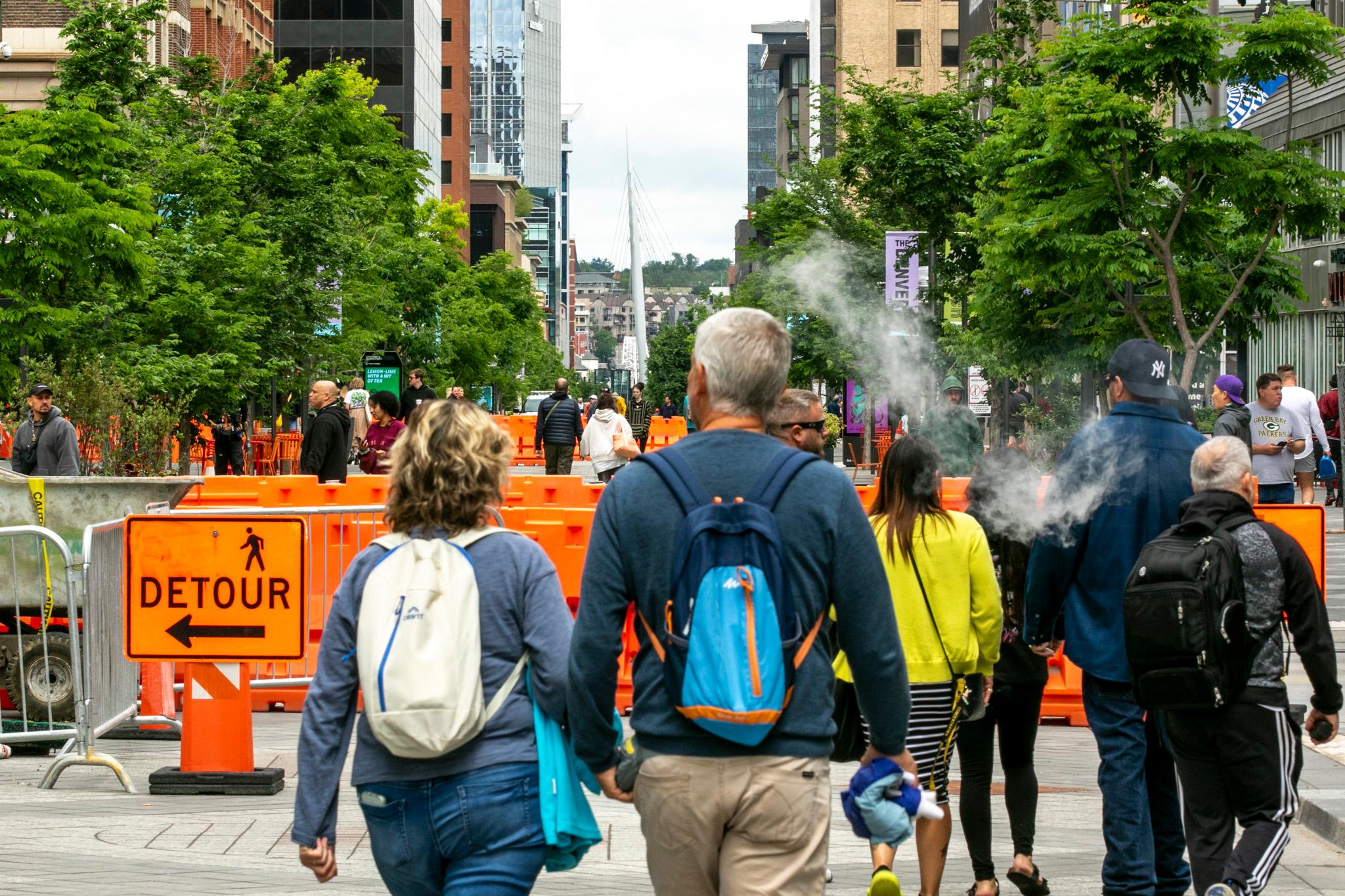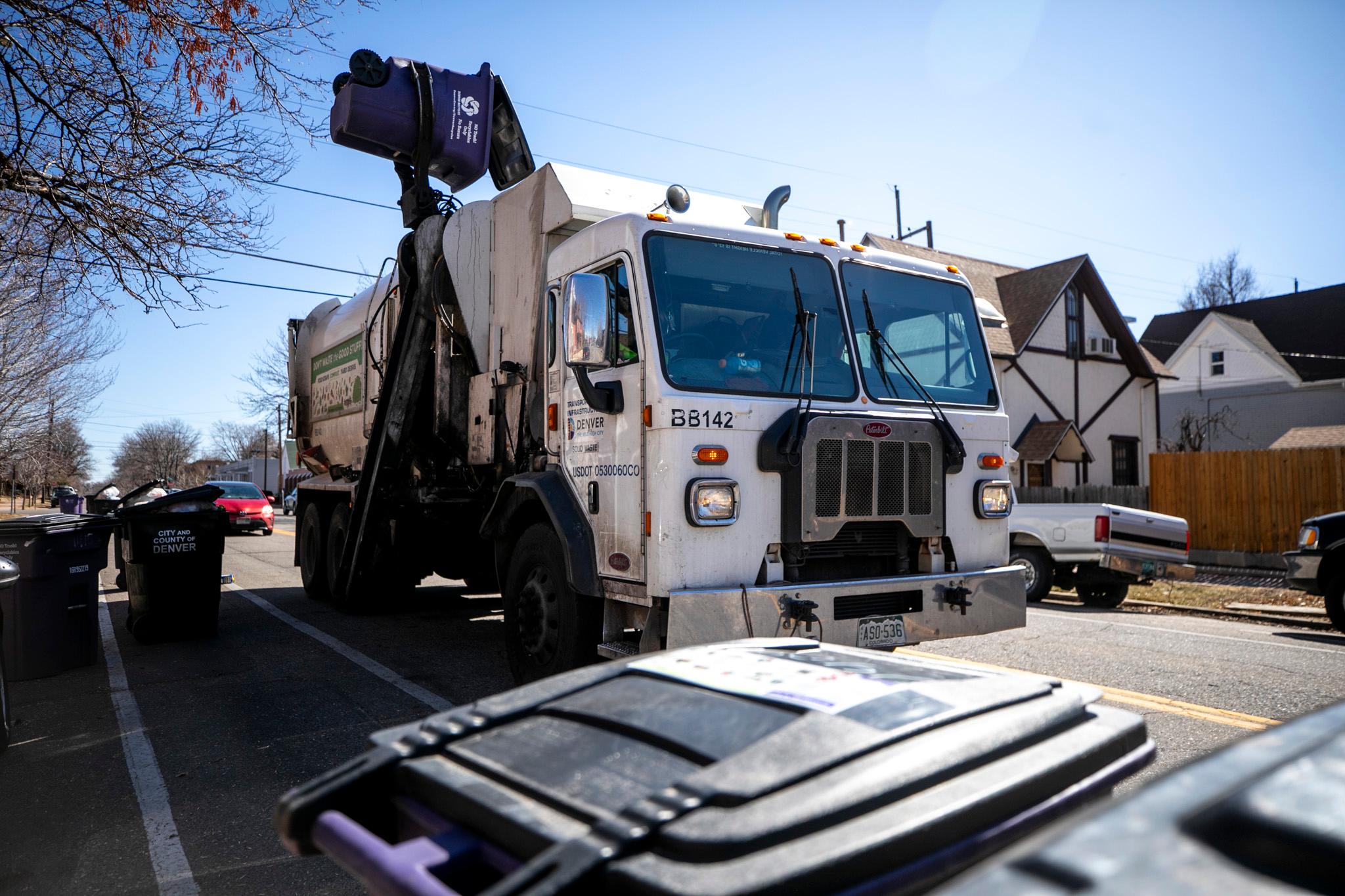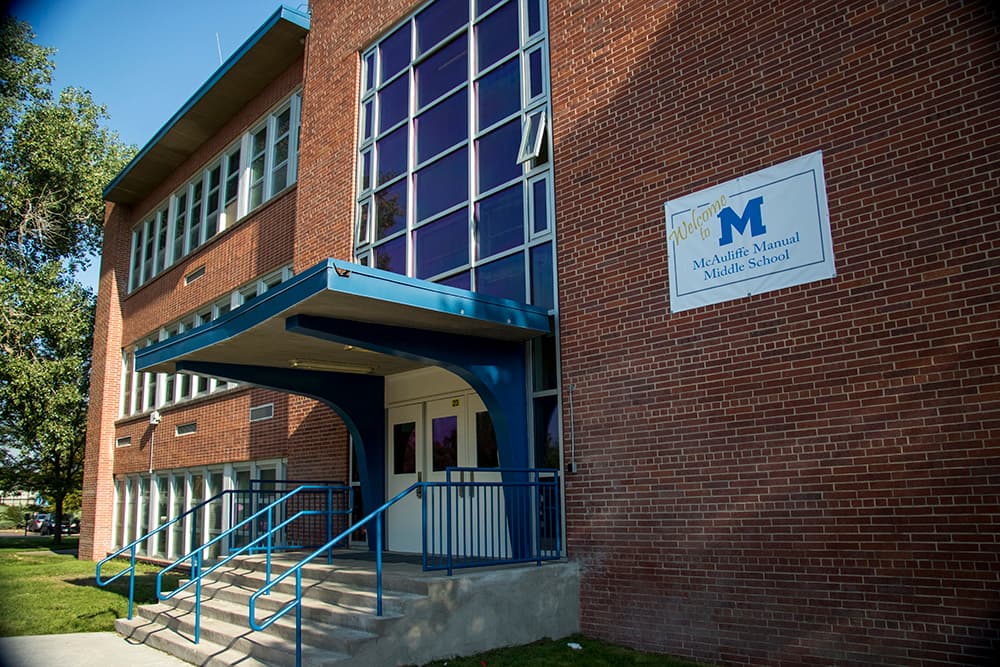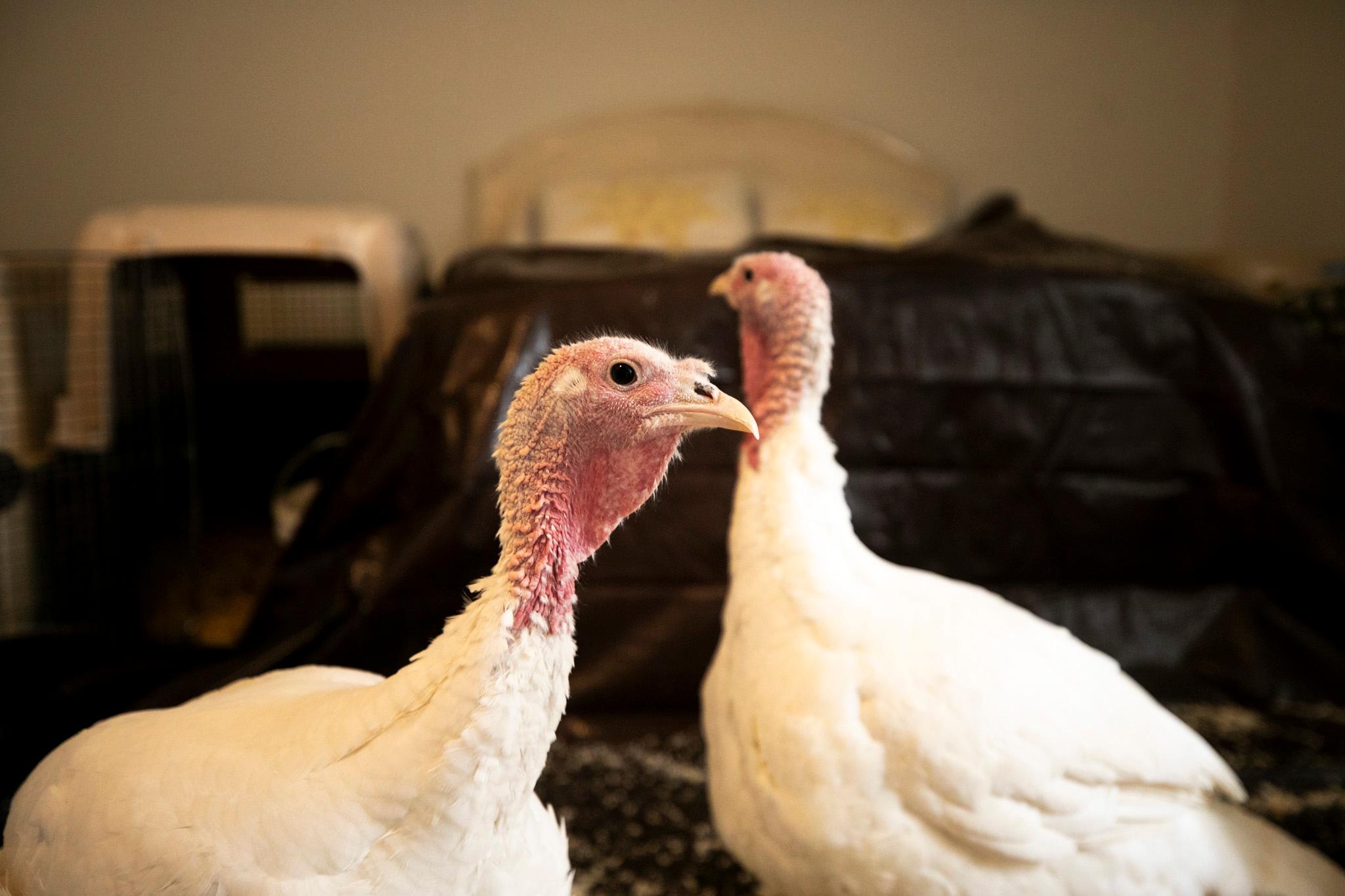The local historian Mark Barnhouse described 16th Street as “the heart of a great city” in his book about the 1.7-mile commercial strip.
But lately, that heart has been struggling to pump blood.
Mayor Mike Johnston and downtown boosters are betting big that a $175 million construction project and a $100,000 rebranding will bring life back to the former 16th Street Mall — now renamed 16th Street.
The mall is a one-mile portion of the strip, designed by famed architect I.M. Pei and built in 1982. It serves as Denver’s main pedestrian street. Boosters long heralded it as a must-visit destination, a concentration of the best Denver has to offer — even as national chains took up many storefronts.

But in the last five years, downtown’s restaurants, retail, tourism and commercial real estate have all been upended — first by the pandemic and then the massive revamp of the central street. Denver’s pedestrian main street went from being a vital spot for tourists and downtown workers — proof of the city’s “world-class” aspirations — to a tortuous maze of fences hiding torn-up pavers and nonstop construction.
The area’s reputation has nosedived. Reviewers on TripAdvisor have described the mall as “boring,” “a creepy ghost town,” and a “sketchy Skid Row type street with zero stores.”
Literally and figuratively, one visitor said, the 16th Street Mall “stank.”
Now, the mayor and other city leaders are hoping to rewrite the story. This weekend, they’ll celebrate the reopening — mostly — of 16th Street. City workers have changed the layout of the street, replaced thousands of pavers, added new trees and public art, and updated the infrastructure underneath the street.
Meanwhile, the downtown neighborhoods around the street have changed dramatically. There are fewer office workers, with towers standing largely empty — but there are more residents, with the continued development of apartments and condos in the area. The mayor also has cleared out homeless encampments from the city core, and crime rates have declined, while tourism has rebounded.
The recovery of downtown matters to the entire city: Facing a $250 million budget hole, Denver’s government badly needs its economic heart to get back on pace.
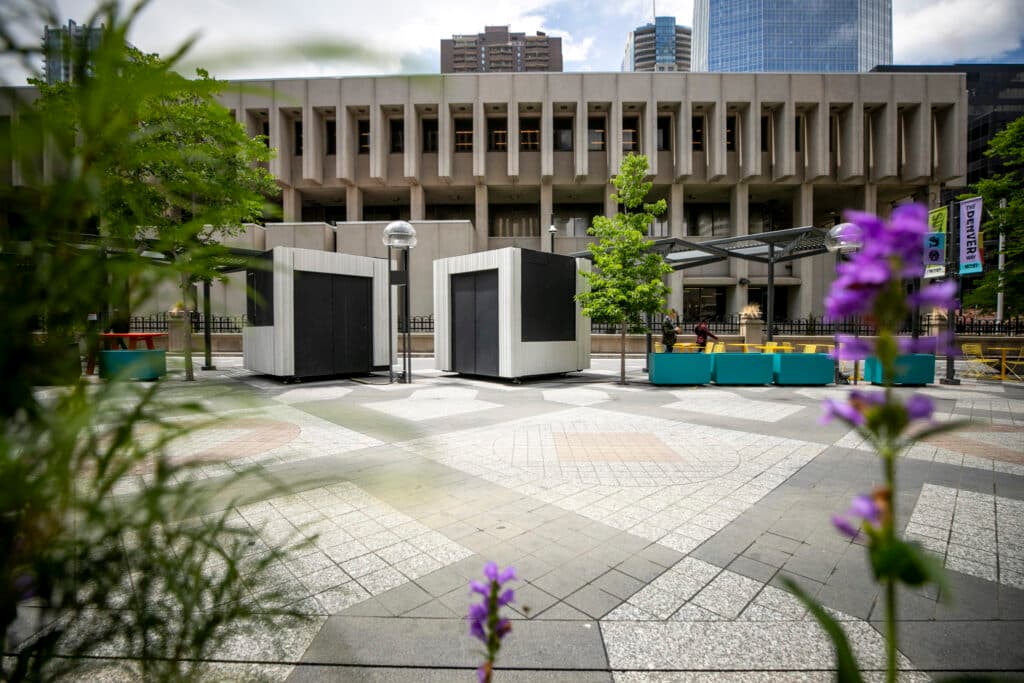
“It’s been a long time since 16th Street has been 16th Street,” said Councilmember Chris Hinds, who represents the area. “And this is an opportunity for us to demonstrate that we’re open again, that 16th Street is open again.”
It’s a pivotal moment for the city — here’s how we got here.
Downtown’s 9-to-5 office life has been crumbling for years.
Companies sent workers home as COVID-19 spread. Restaurants switched to takeout. Stores boarded up. The virtual economy gained strength as city centers nationwide crumbled.
Even after businesses reopened and politicians urged residents to resume their pre-pandemic lives, many downtown office workers never returned.
The cost of renting an office dropped, but nowhere near as fast as office workers abandoned their downtown desks. Many workers who returned downtown remained on hybrid schedules, years later. Among those are thousands of city workers who once brought foot traffic downtown. They are still on a post-pandemic three-day-a-week hybrid schedule established by former mayor Michael Hancock.
Johnston has talked about bringing city employees back to the office for the full week. So far, that hasn’t happened — despite urging from the boosters at the Downtown Denver Partnership.
Meanwhile, office vacancy rates have ballooned, rising from just under 10 percent to over 27 percent, as more people began working from home.
Yet commercial rent prices have not dropped significantly, and business owners have been hesitant to pay for overpriced commercial space. As a result, there are far fewer commuters to keep businesses humming on 16th Street and beyond.
“I don't know what's in the minds of the owners of these buildings and when they will realize that sitting on an empty building or keeping two stories empty doesn't make sense,” said Susan Powers, a longtime downtown Denver resident and affordable housing developer. “They need to lower the rates.”
But that’s a difficult proposition for building owners who paid prices far higher than they can now sell for, some of whom are in receivership and have lost control of their properties.
Property owners still in control of their property are offering concessions — like months of free rent — or are patiently waiting for the market to bounce back instead of dropping rents, explained Amy Aldridge, a commercial broker with Tributary Real Estate. Others, facing foreclosure, have nothing to lose.
“They don’t need to lease a building that they’re going to lose,” Aldridge said.
Commercial real estate tends to lag behind market trends, explained Kourtny Garrett, the head of the Downtown Denver Partnership. But it’s unclear what will become of the downtown towers. Researchers have found only some can be converted to residential space, which is in higher demand, and major commercial tenants are leaving for newer buildings elsewhere.
Years could pass before rents drop significantly enough to lure in small businesses. And the Partnership hopes the city will support them in the meantime.
Construction has compounded the problems.
Construction workers began tearing up the mall just as pandemic recovery began in spring of 2022, sledgehammering an already struggling downtown economy. A tangle of fences made a trip to 16th Street less enjoyable than ever. Reaching the surviving storefronts was a slog.
Combined with the exodus of office workers, construction drove stores out of the area. The ground-floor vacancy rate rose to 30 percent on 16th Street.

The departures from the mall included Sephora, Starbucks, Chili's, Hard Rock Cafe, Corner Bakery and McDonald's — largely national chains.
The city claims local businesses fared better because of city support. But not all did. Tea with Tae, a business that received free rent and a stipend from a pilot pop-up program with the city, abandoned its spot, citing slow foot traffic, people defecating on the restaurant’s floors and violence.
A once-thriving street was almost empty, save for construction and bored retailers waiting for consumers to return.
Tourists soured on the city center.
In 2019, TripAdvisor reviewers described the mall as “a great place for walking around” and a place with “cool shops, amazing food and some awesome street performers.” As one reviewer wrote: “Go with your friends, family or just to show somewhat what Denver is like.”
But a Denverite review shows complaints began to roll in just before the pandemic hit.
“Stay away. Unless you like panhandlers, drug addicts, street urchins and the famous tuberculosis bus,” wrote a Texan. “It is horrible!”
Rampant homelessness, spawned in part by a devastating rise in the cost of housing and compounded by the arrival of fentanyl in the drug supply, had many people living — and breaking down — on the street.
“If you’re a solo female or family, I would avoid,” a tourist said.
After construction started in 2022, complaints increased.
“It was closed, you could only go through the sidewalks where it was dirty because a lot of homeless people were hiding there and there were no patrols,” said a tourist from Mexico City.
As Mayor Johnston spent his first months in office trying to clear downtown encampments and get people into shelters, 16th Street’s reputation continued to suffer with high-profile shootings and stabbings in the area.
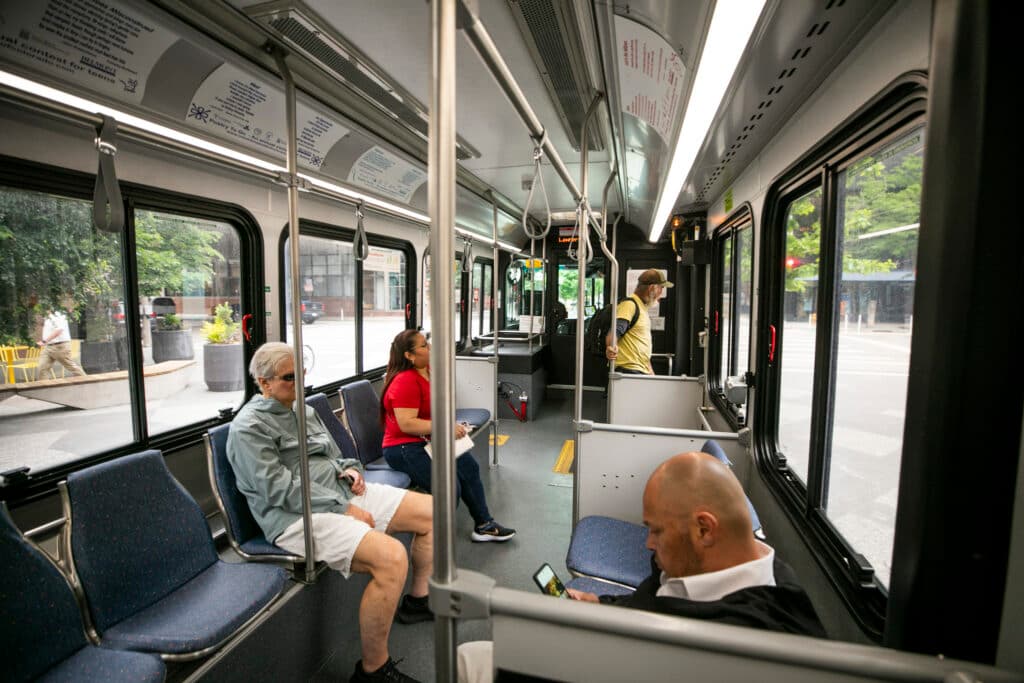
Over the past year, the mall has finally reopened, a few blocks at a time.
But vacancy rates are still high, some construction is set to continue into the fall and some tourists remain unimpressed.
“To me, it was a big waste of time,” wrote a visitor from New Orleans in May 2025. “Don’t bother.”
The city is banking on a downtown recovery.
The slowdown has hurt the city’s tax revenue. The Union Station and Central Business District neighborhoods brought in $111 million in city dollars last year, a major driver of the city budget — but growth of that revenue has been slower than the city’s projections.
When 16th Street Mall fails to deliver its economic potential, every neighborhood in the city feels the pain, the mayor often says.
While the growth of downtown sales tax has softened, government spending has far outpaced revenue citywide, and the city is facing a $250 million budget shortfall with no emergency funds to cushion the impact.
Johnston has said that the rebirth of 16th Street — along with cuts to city spending — are crucial to the turnaround.
“If we can recover that downtown sales tax number, that also is a real windfall to the budget and just a windfall for the city's economic growth,” the mayor told Denverite earlier this year.

Meanwhile, downtown boosters have even bigger plans. The mayor has backed the Downtown Denver Development Authority — the entity that revamped Union Station and the surrounding area – in its move to spend $570 million on projects across downtown. That funding will come from tax-increment financing.
The mayor and others hope those projects, which are still in preliminary planning, will help draw new residents to the city. A boom of new construction has already lowered rental rates in downtown, and the city is hoping to draw more families and working-class people to the area.
The moment is here, 'and failure isn't an option'
Most of the fences that have made the mall such an unbearable place to walk are gone. Neighbors are celebrating the new pavers and public art.
Barnhouse, who wrote the book on 16th Street and regularly visits downtown, wishes the old pavers had been reused after workers dug up the streets. But he’s glad the new design includes the replications of the original lampposts and enjoys some of the creative installations like climbable trout and a beehive play structure.
“The historic preservationist in me doesn’t like what they did, but the urbanist in me does,” Barnhouse said.
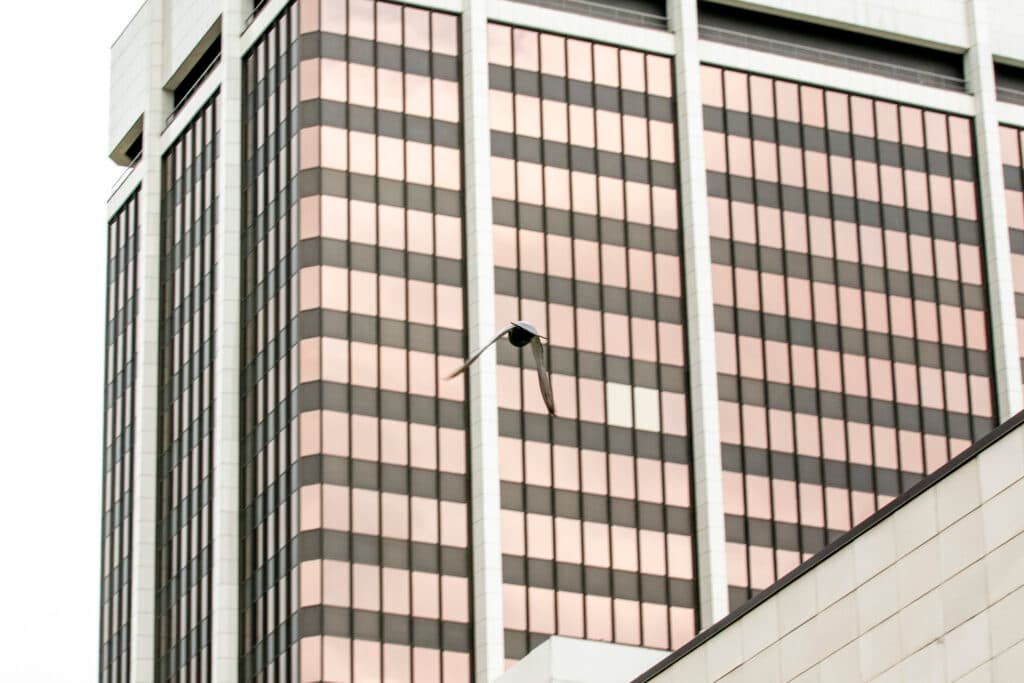
Thousands attended a concert in downtown on Memorial Day weekend. Thousands more are expected to celebrate the partial reopening the following weekend. The city has bolstered the downtown police force and lured new businesses to the area.
Artists and entrepreneurs are eyeing the more affordable real estate and vacant storefronts for creative spaces, Garrett said.
Smaller companies and organizations are looking to find better rental deals and brokers are trying to help them, Aldridge said.
Even the buskers are back with their drums and guitars.
“People who are down here and are committed to being here long term all agree: … we want this to be successful,” Powers said, “and failure is not an option.”
The heart of Denver may be beating again. Now the city will wait for the lifeblood to return.


